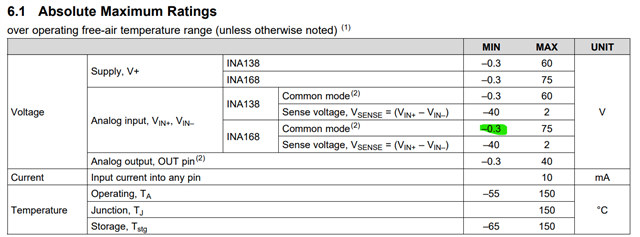Other Parts Discussed in Thread: OPA333, INA138
Tool/software:
Hi,
my customer asked about the power supply of INA168 (and OPA333) in app note SBOA198A:
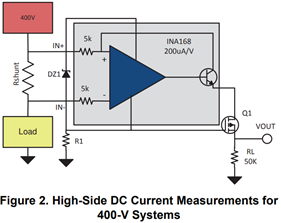
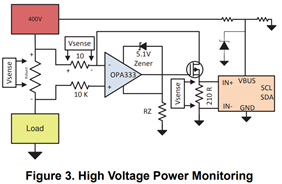
Questions
Could you please give me a clear example of what a correct/complete design must look like including the power supply?
In Lightning events, the voltage becomes negative (-100V at the load).
- What current is measured?
- Does the output remain "stable" and return when the voltage is >0V?
- If my "switch" is closed (no connection to the battery), a CM voltage of -100V is set
- That is correct?
- If the device suitable for this or there is a workaround?
Can I use the circuit from the INA168 datasheet according to Chapter 8.2.6 if I do not supply V+ from a GPIO but want to build it floating like in Figure 2 from the app note.
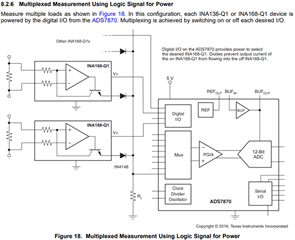
Can I use the circuit from the INA168 data sheet according to Chapter 8.2.5 if I do not want to supply V+ with 5V but want to set up floating like in Figure 2 from the app note.
- What is the negative CM voltage that sets in?
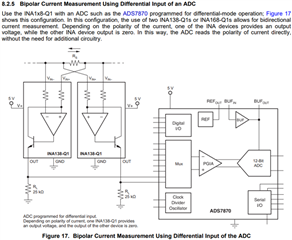
Best regards


